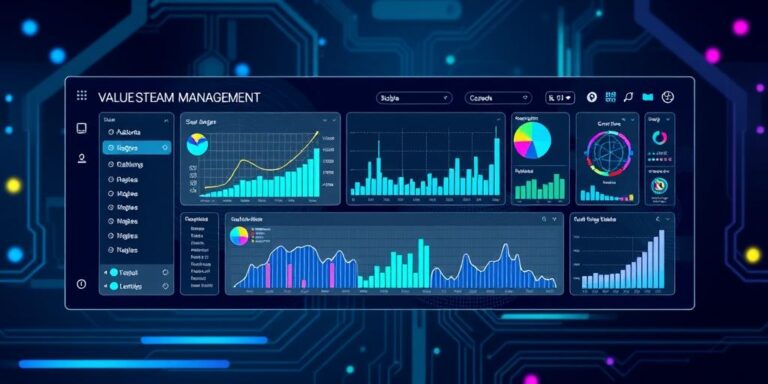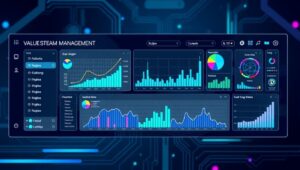Value Stream Management in Software Delivery: A 2026 Perspective
Value Stream Management (VSM) has become increasingly critical in software delivery. This article explores how VSM will evolve by 2026, focusing on key trends, challenges, and opportunities.
What is Value Stream Management?
Value Stream Management is a methodology that analyzes, visualizes, and improves the flow of value delivery. In software, this means optimizing every step from ideation to deployment and feedback. The goal is to reduce waste, increase efficiency, and deliver value to the customer faster.
Key Trends Shaping VSM by 2026
-
AI-Powered Insights: AI will play a significant role in analyzing value streams, identifying bottlenecks, and suggesting improvements. Machine learning algorithms will provide real-time insights, enabling faster decision-making.
-
Enhanced Automation: Automation will extend beyond CI/CD pipelines. VSM will integrate with automated testing, release management, and even compliance checks, reducing manual overhead.
-
Integration with DevOps Platforms: VSM tools will be tightly integrated with DevOps platforms, offering a seamless view of the entire software delivery lifecycle. This integration will facilitate better collaboration and transparency.
-
Focus on Business Outcomes: VSM will shift from a purely technical exercise to a business-focused strategy. Metrics will align with business goals, ensuring that software delivery directly contributes to revenue and customer satisfaction.
-
Cloud-Native VSM: With the increasing adoption of cloud-native architectures, VSM will adapt to provide visibility and optimization across distributed systems and microservices.
Challenges and Opportunities
Challenges:
- Data Silos: Integrating data from various tools and systems remains a challenge. Overcoming data silos is crucial for a comprehensive view of the value stream.
- Cultural Resistance: Adopting VSM requires a cultural shift. Teams must embrace collaboration and continuous improvement.
- Complexity: As software systems become more complex, managing value streams becomes more challenging. Simplified, user-friendly VSM tools are needed.
Opportunities:
- Improved Efficiency: VSM can significantly reduce waste and improve the efficiency of software delivery processes.
- Faster Time to Market: By optimizing the value stream, organizations can deliver software faster, gaining a competitive advantage.
- Better Alignment: VSM aligns software delivery with business goals, ensuring that development efforts are focused on delivering maximum value.
Implementing VSM in 2026
-
Assess Current State: Start by mapping your current value stream. Identify bottlenecks, inefficiencies, and areas for improvement.
-
Choose the Right Tools: Select VSM tools that integrate with your existing DevOps platform and provide the insights you need.
-
Foster Collaboration: Encourage collaboration between development, operations, and business teams.
-
Automate Where Possible: Automate repetitive tasks and processes to reduce manual overhead.
-
Continuously Monitor and Improve: VSM is not a one-time effort. Continuously monitor your value stream and make adjustments as needed.
Conclusion
Value Stream Management will be essential for organizations looking to optimize their software delivery processes. By embracing AI, automation, and integration, businesses can achieve unprecedented levels of efficiency and deliver greater value to their customers. As we move towards 2026, VSM will continue to evolve, shaping the future of software development and deployment.




